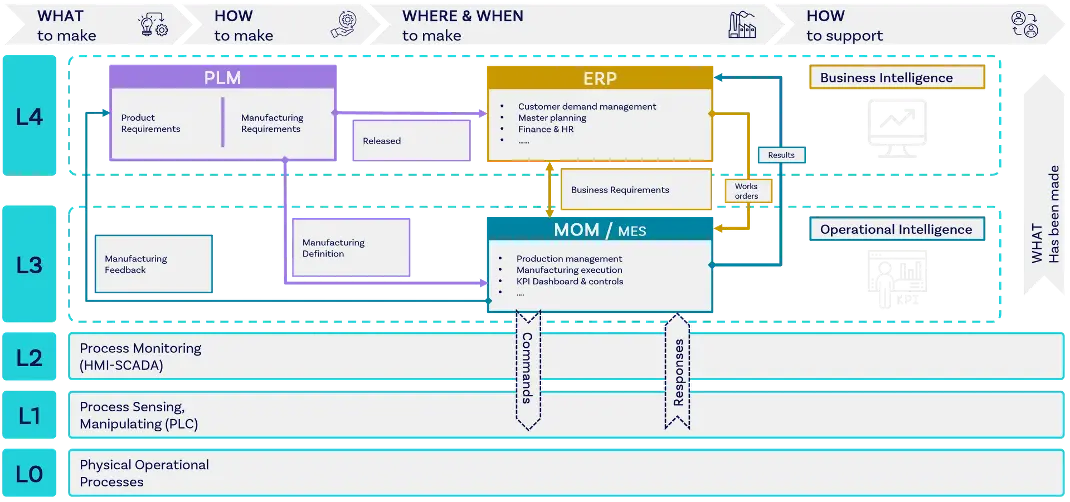Business Transformation Planning
Efficient and successful implementation of a digital ecosystem is not just a matter of developing or buying software, it also requires a holistic methodology that takes all relevant aspects into account.
As a business leader, you have the ambition to prepare your business for the future. You are aware the need for a digital ecosystem and want to implement them in a way that brings maximum value for your business operations. In short: you want to translate your "Needs" into a coherent set of activities, and you need to do this in a structured and sustainable way.
It's important to understand that implementing digital twins is not just a matter of developing or buying software. It touches a wide range of business operations. This can be anything from the way you interact with customers and how your staff work, to your employees’ capabilities and how digital twins integrate with the rest of your information management landscape and IT infrastructure.
From this perspective, translating strategy and strategic goals directly into a concrete project and change portfolio is too big a leap to make all at once. Although common in many organisations, practice shows that overreaching leads to ambiguity, uncertainty, and the wrong activities and projects.

Our Approach
Digital Twins can bring disruptive features to your business, your customers and other parties in your digital ecosystem. That’s why stakeholder engagement is key when implementing digital twins.
Most stakeholders aren’t digital natives and aren’t aware of digital twins’ potential. This is why managing the necessary transition when adopting Digital Twins is so important. A structured approach is needed that allows for pro-active stakeholder engagement, making them aware of the possibilities and involving them in digital twin activities. Our method supports this approach, helping organisations execute and monitor digital twin activities, ensuring quality digital twin solutions and tracking the long term benefits.
1. Ambition
Define the motivations, rationale and expects targets. Create a holistic systems view of the problem for greater understanding
2. People
Make sure you engage with a range of different stakeholders to ensure you bring them on the journey with you, and they understand the value.
3. Realisation
Described the pathway and expected execution to deliver the business transformation. Drive compliance, standardisation to enterprise architecture frameworks.
4. Measure
Described the pathway and expected execution to deliver the business transformation. Drive compliance, standardisation to enterprise architecture frameworks.
